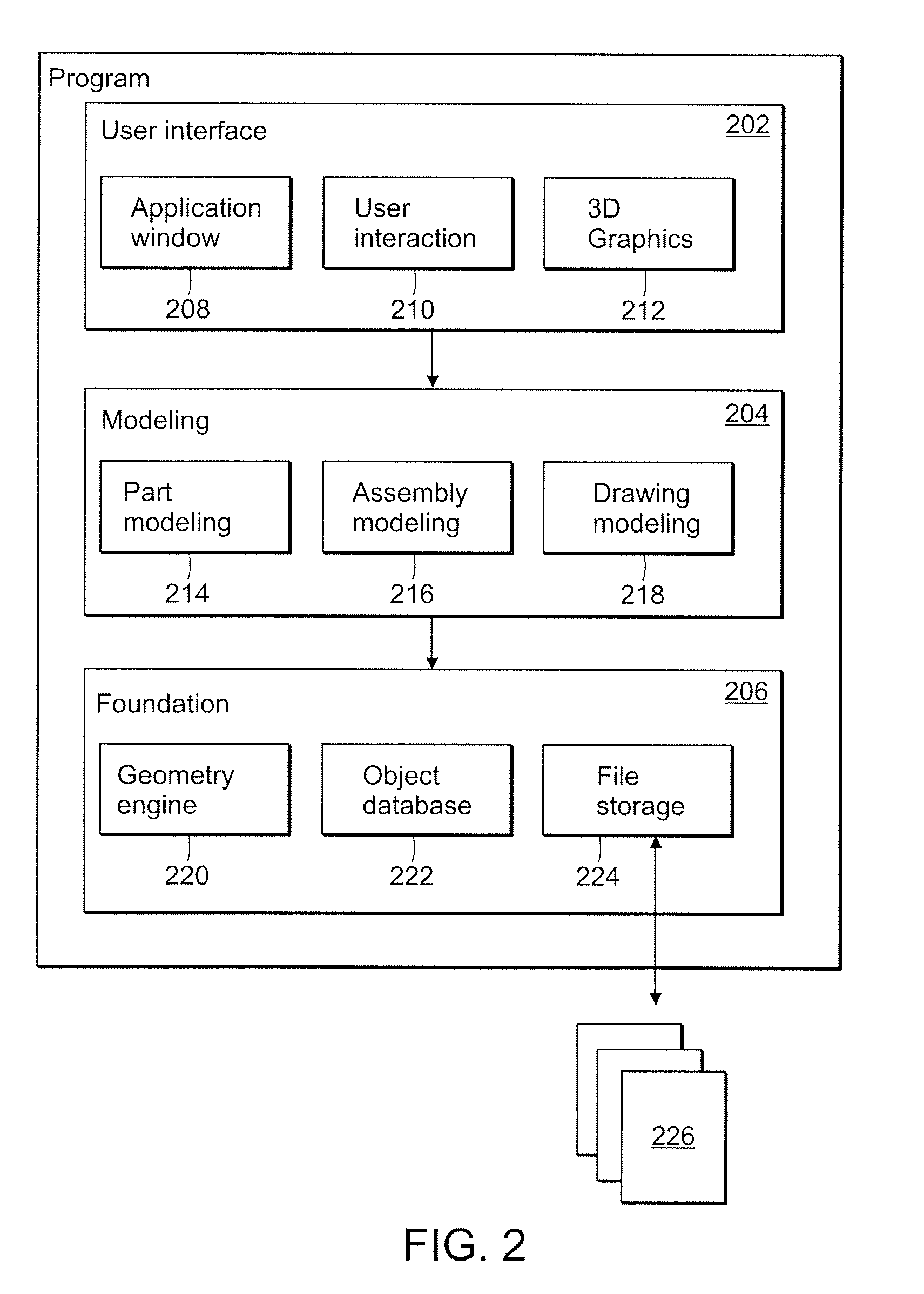Systems and methods for merging and splitting intersecting solids and surfaces
a technology of intersecting solids and surfaces, applied in the field of merging and splitting intersecting geometryonly solids and surfaces, can solve the problems of user never knowing, affecting the quality of the image, and requiring a lot of effort and additional steps to maintain the chang
- Summary
- Abstract
- Description
- Claims
- Application Information
AI Technical Summary
Benefits of technology
Problems solved by technology
Method used
Image
Examples
Embodiment Construction
[0027]Embodiments of the invention allow any solid object or surface to be combined or split by another solid or surface in a simple and intuitive manner. Solids and surfaces can be modified regardless if they were originally created in the embodiment's CAD system or if they were imported from another CAD system.
[0028]In one embodiment, the invention is a set of two tools within a three-dimensional modeling system, namely a Combine tool and a Split Body tool. The Combine tool can be used to combine or split solids or surfaces by any other solids and surfaces. The Split Body tool can be used to split a solid by one of its own faces. These modifications can be made without the need to completely rebuild the object or deal with various constraints of the modeled object. The term “objects” refers to any geometric solid or surface represented within the CAD system. Solid objects can be composed of a set of faces that enclose a volume.
[0029]When combining objects within the CAD system, th...
PUM
 Login to View More
Login to View More Abstract
Description
Claims
Application Information
 Login to View More
Login to View More - R&D
- Intellectual Property
- Life Sciences
- Materials
- Tech Scout
- Unparalleled Data Quality
- Higher Quality Content
- 60% Fewer Hallucinations
Browse by: Latest US Patents, China's latest patents, Technical Efficacy Thesaurus, Application Domain, Technology Topic, Popular Technical Reports.
© 2025 PatSnap. All rights reserved.Legal|Privacy policy|Modern Slavery Act Transparency Statement|Sitemap|About US| Contact US: help@patsnap.com



